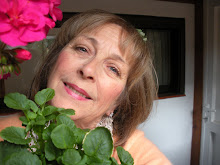ESSENTIAL OILS CAN
SUPPORT WEIGHT LOSS AND WEIGHT MAINTENANCE
Research has shown
that we feel full because of a special mechanism in our brain. Specifically,
this satiety response is regulated by what is technically known as the
ventro-medial nucleus of the hypothalamus, a portion of the brain that
regulates many basic drives including emotions and libido.
One reason we stop
eating is that this centre signals a ‘fullness’ or a sense of being satisfied.
The nose (and inhalation process) is directly connected to the hypothalamus. An
odour molecule in the air makes its way to the top of the nasal cavity which is
the location of a small area known as the olfactory bulb with millions of scent
receptors.
The odour molecule
then moves through the mucous membrane and binds to receptor sites on the
olfactory nerve. These receptors may be very specific, in that they are
designed to detect particular odour molecules. The system operates by taking
individual odour molecules and intensifying them in such a way that the brain
can respond to them.
This part of the
brain is called the limbic lobe and is the seat of our emotions. The limbic
lobe activates the hypothalamus which controls our drives and instincts as well
as the ability to feel full. An emotional state can also trigger a desire for
food. We can also control what we feel by inhaling certain scents.
The sense of smell
can help us suppress appetite and all those irrational emotional responses we
have to food. Using our sense of smell consciously can give us control where
our will power fails. For most people, using scents can curb cravings.
The Smell and Taste
Treatment and Research Institute of Chicago found that inhaling a culinary
scent (basil, oregano, lemon, etc.) regularly throughout the day, especially
when hungry can suppress the desire to taste and therefore eat. By inhaling an
aroma throughout the day, you can inhibit the desire to eat. This study found
that the more people used scent to control their appetite, the more weight they
lost. The key was to vary the oils used to prevent becoming desensitized which
would reduce the effectiveness of the inhaled oils.
HOW TO USE
ESSENTIAL OILS TO SUPPRESS APPETITE
Experiment by
choosing three essential oils to use throughout the day. Put a couple drops of
each one of the selected oils on the cotton wool ball or aromatherapy pendant.
Hold it close to your nose when you feel you need a stronger scent. The more
you use these scents, the more effective they will be. Each day change the oils
you used previously with three different ones.
Essential oils such
as peppermint, bergamot, and grapefruit can have a positive impact in your
efforts to lose weight when combined with a healthy (mostly raw) diet and
exercise regimen.
WHICH OILS TO USE
FOR WEIGHT LOSS
Peppermint is a
digestive aid that soothes an upset stomach and helps with digestive problems.
It also provides unique weight loss benefits as well. A recent study found that
inhaling peppermint can directly affect your brain's satiety centre, the
ventro-medial nucleus of the hypothalamus. This powerful essential oil makes
you feel full after a meal. The result is that you can eat less and still feel
satisfied. You can choose to either inhale peppermint oil before a meal or
drink an infusion of peppermint tea before each meal.
Other oils that
might be helpful:
Grapefruit - a
natural weight loss appetite suppressant and through a process called lipolysis
dissolves fat.
Bergamot - stimulates your endocrine system and produces a sense of calm and
wellbeing and alleviates stress. Lavender can be combined with bergamot to enhance
this calming effect.
Tangerine - A diuretic and is also used to calm the nervous system.
Orange oil - helps overcome depression and gives emotional support.
Ylang ylang - used to clarify thoughts and assist in a feeling of wellness and
calm.
Patchouli - used as a sedative and relaxation aid.
Essential
oils are a terrific and natural way to suppress appetite and calm emotions as
they relate to food and stress, and to actually dissolve fat. For safety and
effectiveness, read the directions that come on the bottles of each essential oil
before inhaling.
Reaching and maintaining your ideal weight is a very important
step towards achieving vibrant health.
Some Info taken from an article by Peggy Carey





.jpg)

















.JPG)



.jpg)











